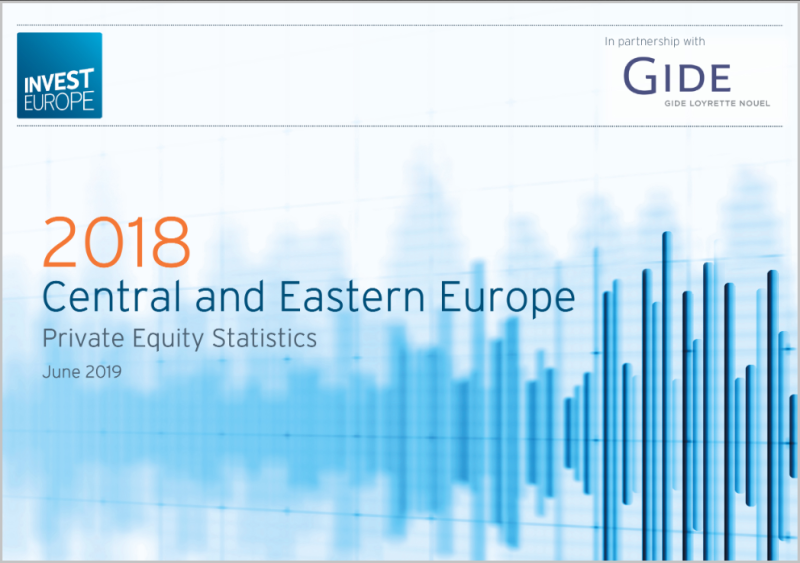This report provides annual activity statistics for the private equity and venture capital markets of Central and Eastern Europe in 2018 and prior years. The statistics contained herein are based solely on the “market approach”, wherein information is compiled to show activity in a particular country, regardless of the origin or location of private equity fund managers*. For the purposes of this publication, CEE comprises the countries of Bosnia and Herzegovina, Bulgaria, Croatia, the Czech Republic, Estonia, Hungary, Latvia, Lithuania, North Macedonia, Moldova, Montenegro, Poland, Romania, Serbia, Slovakia, Slovenia and Ukraine. These countries had a total population of about 161 million and registered a total GDP of €1.6 trillion in 2018.
The significant findings from the CEE Statistics 2018 report include:
- Private equity fundraising for CEE hit the highest annual level in a decade in 2018 with €1.8 billion.
- Buyout funds in CEE raised €1.1 billion, while the region’s venture capital funds attracted over €500 million for the second year in a row.
- Private equity investment into companies across CEE reached €2.7 billion in 2018, the second-highest amount ever achieved, following 2017’s record €3.5 billion. The number of companies backed increased by 50% year-on-year to almost 400, also the second-highest level on record. This was driven by a sharp increase in CEE companies supported by venture capital.
- The number of private equity and venture capital-backed exits in CEE reached an all-time high of 128 companies divested in 2018. This represented a total value of over €1 billion for the fifth year running, measured at historical investment cost. Poland accounted for over half of this total exit value with €575 million.
- All countries in the CEE region covered by Invest Europe’s report surpassed the European Union’s 2.1% GDP growth rate in 2018, according to data from the International Monetary Fund (IMF). Eight of the countries achieved annual growth above 4%, with Poland, Hungary and Latvia experiencing particularly high growth rates, reaching 5.1%, 4.9% and 4.8% respectively.
- Poland saw CEE’s highest amount of private equity investment with its companies receiving €850 million in total last year. The Czech Republic was close behind with €767 million invested into its companies via private equity and venture capital funds. Hungary had the highest number of companies receiving investment with over 190 backed last year, almost half of the regional total.
- The biotech and healthcare sector took the highest share of CEE’s private equity investment with 32% of the total value in 2018, while consumer goods and services companies received 27% of funding. The region also has strong technology start-up credentials, including Czech cyber-security group Avast which was 2018’s largest tech initial public offering (IPO) on the London Stock Exchange at a valuation of £2.4 billion. Meanwhile, Romania’s robotic process automation firm UiPath achieved a $7 billion valuation during a funding round earlier this year, making it one of the world’s most valuable artificial intelligence companies.
>> Click here to find out more and read the report.
* This contrasts with the “industry approach” that shows the activity of fund managers based in a particular country, and which is not applied in this paper. Invest Europe believes using the market approach gives a more accurate picture of the overall investment trends and activities in the markets of Central & Eastern Europe (CEE) due to the significant activity of regional funds and fund managers.












